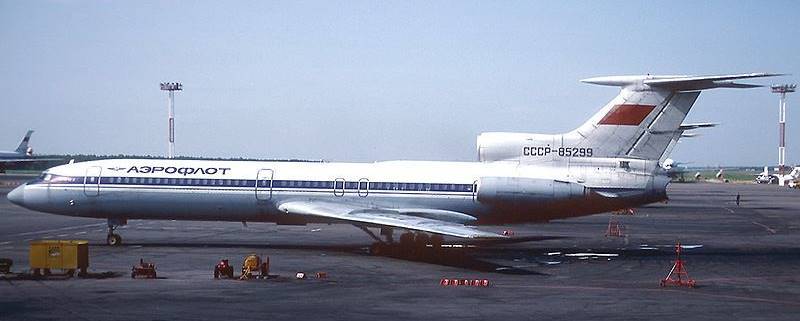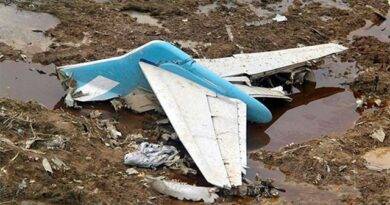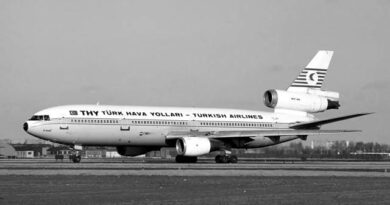Aeroflot Flight 7425
Plane accidents and crashes go as far back as the history of aviation itself, and there have been countless accidents and crashes throughout time. While not all crashes or accidents result in fatalities, naturally, the rate of deaths caused by accidents is much higher compared to land and sea transportation. So, when a crash or accident takes place, it is considered a lot more important and significant than, for example, a car accident.
For this reason, almost all crashes and accidents are recorded and inspected thoroughly in aviation, to make sure that the same unfortunate events don’t happen again. However, there is one significant factor that can’t be improved anymore, at least for the time being, and this means that although aeroplanes and avionics have been almost developed to perfection, the human factor, namely the human error doesn’t seem like it will be eliminated in the near future, at least for commercial aviation.
As for Aeroflot Flight 7425, the human factor was also the key point to the occurrence of the crash. Further in this blog, we will talk about how, when, and why the crash took place.
When Aeroflot Flight 7425, a Tupolev Tu-154B-2 with the registration CCCP-85311, crashed on July 10, 1985, it was carrying passengers on a domestic flight between Karshi, Ufa, and Leningrad for the airline’s Uzbekistan division. All 200 passengers on board were killed in the collision. With this death toll, Aeroflot Flight 7425 is the deadliest incident involving a Tupolev Tu-154 and the deadliest air catastrophe in the histories of Soviet and Uzbek aviation.

source: wikipedia
Soviet Plane Crashes
As many of our readers know, Aeroflot was a Soviet aviation company before the USSR dispersed. And also as widely known, the Soviets weren’t very “transparent” about the accidents, deadly events, or their big projects to the rest of the world. Consequently, we are not able to accumulate much information about the plane crashes that occurred during the reign of the Steel Curtain.
For this reason, we also don’t have much information about Aeroflot Flight 7425. Still, further in this post, we will try to inform you, our readers, about the crash as deeply and understandably as possible.
The Day of The Crash
Soviet lands (today’s Russia, Ukraine, Uzbekistan etc.) and weather weren’t really perfect for aeroplanes to be able to fly, due to harsh weather conditions. For this reason, in these regions, it is a very common thing for flights to be suspended, even for days. And for Aeroflot Flight 7425, it wasn’t very different.
The flight had been postponed for over 20 hours, due to harsh weather conditions. During this period, most of the passengers and the flight crew had to stay in the airport, sleepless and tired. When, finally, the greenlight for the flight was lit, it had almost been 24 hours. The passengers and the flight attendants boarded the Tupolev Tu-154B-2, and the plane was ready to take off.
As passengers 52 children and 139 adults were on board flight 7425. Harry N. Argeev was the navigator, Oleg Pavlovich Belisov was the captain, Anatoliy Timofeevich Pozjumski was the co-pilot, and Abduvahit Sultanovich Mansurov was the flight engineer. In the cabin, there were five flight attendants.
The takeoff and cruising were uneventful, at least for a while. But the flight crew were very tired and sleepless, which endangered the whole plane and the passengers. Unfortunately, at the time, there weren’t any regulations about the health and sleep situations of commercial pilots, at least not enough to prevent this unfortunate accident.
A while after the takeoff, during the first leg of the flight (from Karshi to Ufa), the aeroplane stalled, lost its velocity, and crashed into the land in Uchkuduk, Uzbekistan.
The plane was travelling the first leg of the journey while flying at a height of 11,600 metres (38,100 feet) with a speed of just 400 kph (250 mph), which is nearly stall speed at such altitude. The aircrew mistook the tremors that the low speed created for engine surges. The crew further decreased airspeed to 290 km/h by reducing engine power to flying idle using the thrust levers (180 mph). At the time, Uchkuduk, Uzbekistan, was still part of the Soviet Union. The aircraft stopped, went into a flat spin, and crashed into the ground nearby. The 9 crew members and the 191 passengers all perished.
Investigations And The Determined Cause of The Crash
Flight 7425’s cockpit voice recorder was destroyed in the crash. The psychological elements that contributed to the aircraft mishap were analysed by investigators with the aid of psychologists. They concluded that because the flight crew had to spend 24 hours at the departure airport before takeoff, they were extremely exhausted when Flight 7425 crashed. Inadequate rules for personnel confronting unusual situations were another contributing reason in the accident.
Sources:
https://en.wikipedia.org/wiki/Aeroflot_Flight_7425
https://timenote.info/en/events/Aeroflot-Flight-7425
https://zims-en.kiwix.campusafrica.gos.orange.com/wikipedia_en_all_nopic/A/Aeroflot_Flight_7425


